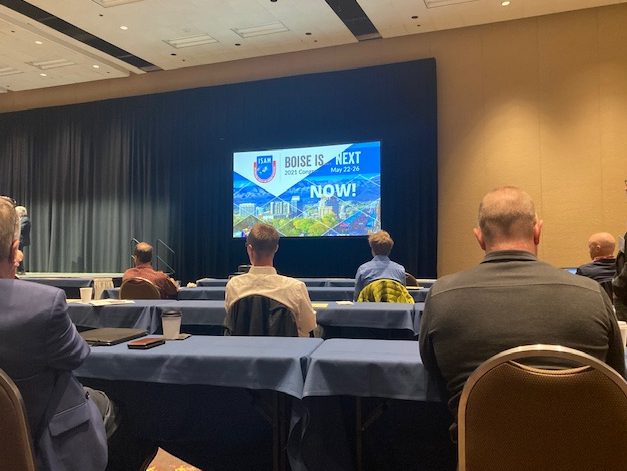Combatting other respiratory infections
ISAM 2021 included an entire session devoted to the use of phages for the treatment of bacterial and mycobacterial lung infections featuring Graham Hatfull of the University of Pittsburgh, Hak-Kim Chan of the University of Sydney, and Benjamin Chan of Yale University, who previously described his work with phages at RDD 2020. Hatfull described his research on the use of mycobacteriophages to treat mycobacterial infections such as tuberculosis, though he noted that most of the patients treated so far have received the phage treatment via IV and while the prospect of delivery via nebulizer for TB therapy is exciting, its role is not yet clear. Hatfull also directed those interested in mycobacteriophages to The Actinobacteriophage Database, which houses information on thousands of phages.
Phage stability, especially during nebulization, was the subject of some discussion. Moderator Reinhold Vehring of the University of Alberta, who had presented research on phage formulation at RDD 2020, warned that “not all nebulizers are viable for delivery of phages,” particularly those that recirculate, and recommended checking for titer reduction. Hak-Kim Chan described the formulation of dry powder phages that do not require cold chain as well as phage/ciprofloxacin combinations; he also recommended the use of mesh nebulizers as a better choice than jet nebulizers for delivery.
In the session on Adult Critical Care, Stephen Ehrmann of CHRU Tours and Andy Clark of Aerogen staged a debate about the utility of inhaled antibiotics, with Ehrmann taking the pro side and Clark arguing that “the evidence at best is extremely equivocal.” Ehrmann argued that inhaled antibiotics work very well and noted that studies have shown that they result in significant reduction in drug resistance and less kidney damage compared to IV delivery and that inhaled antibiotics are in use in much of the world. Clark, who admitted that he was defending a position that he only half believed, pointed out that outside of cystic fibrosis, studies have failed to show any clinical benefit. He also asked why risk any resistance, even if aerosol delivery results in less than IV, for no proven clinical benefit. In sum, Clark, said, researchers really need to figure out why aerosol delivery of antibiotics can kill bugs effectively without significantly improving the patient’s condition.
Fluorinated drugs in respiratory therapy
A session on “Utilization of Fluorinated Materials in Respiratory Drug Delivery” explored potential therapies that could take advantage of the unique properties of perfluorochemicals (PFCs) such as extremely low surface tension and high gas solubility. While Dan Miller of Cystetic Medicines described the use of PFCs for an existing technology — engineered particles for inhaled drugs such as TOBI and Bevespi — speakers Marla Wolfson of Temple University and John Dennis of SolAeroMed described potentially revolutionary uses for PFCs in respiratory medicine.



